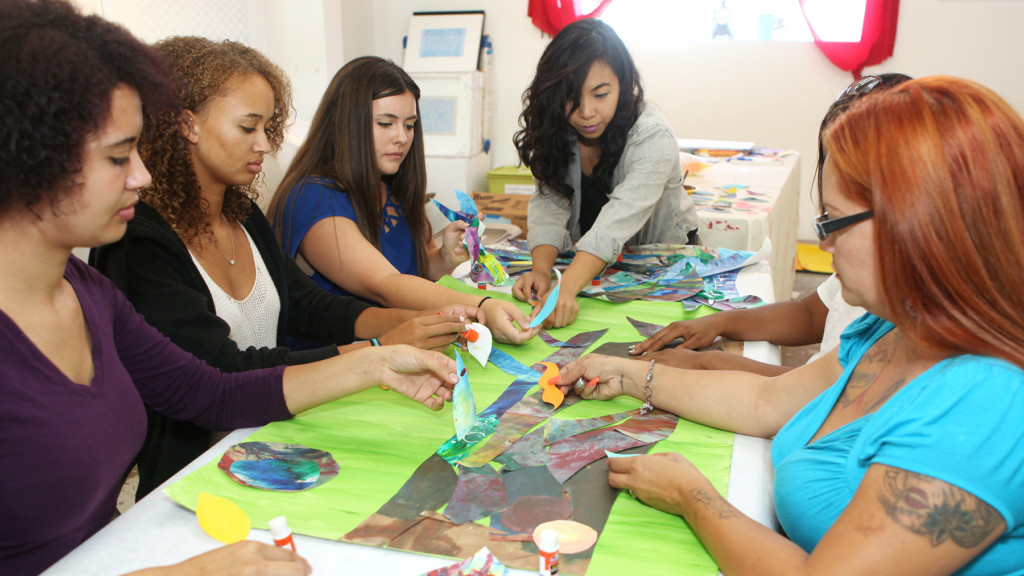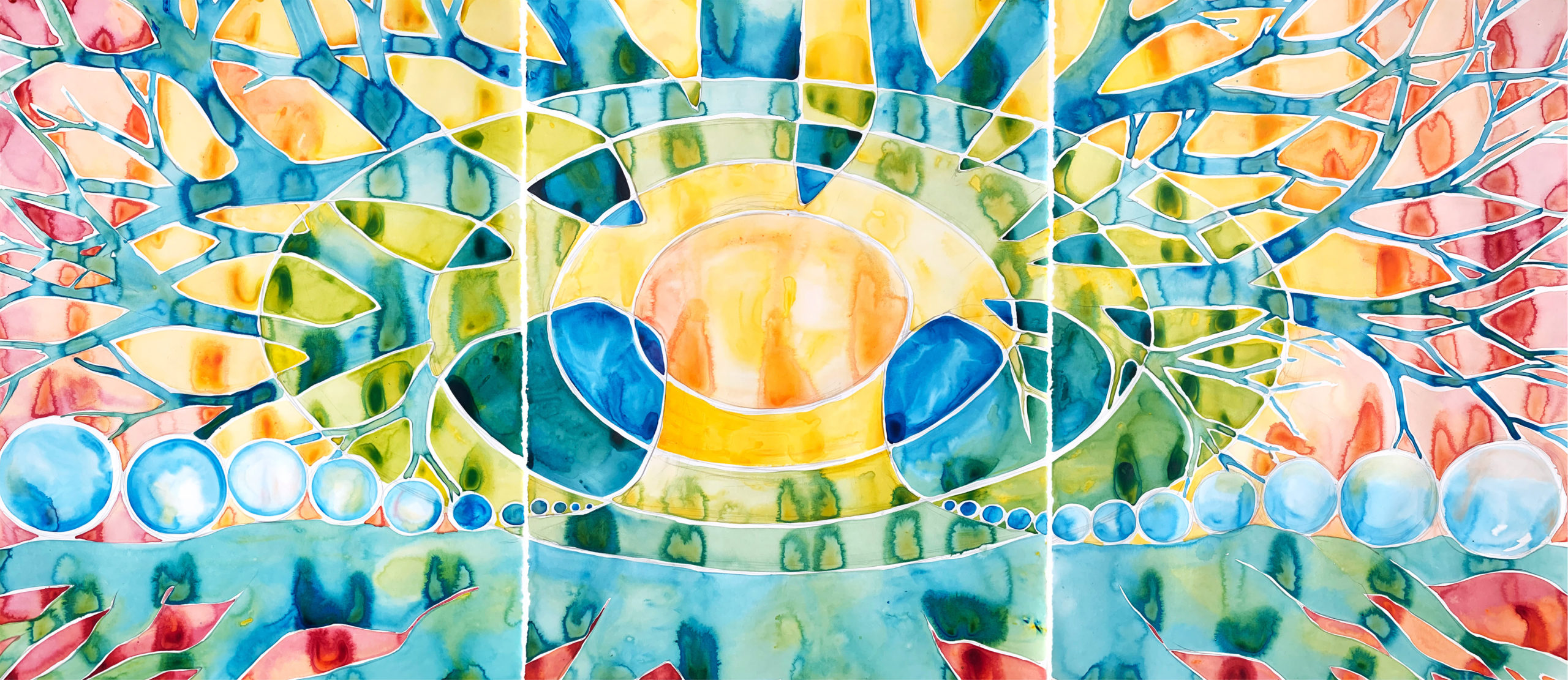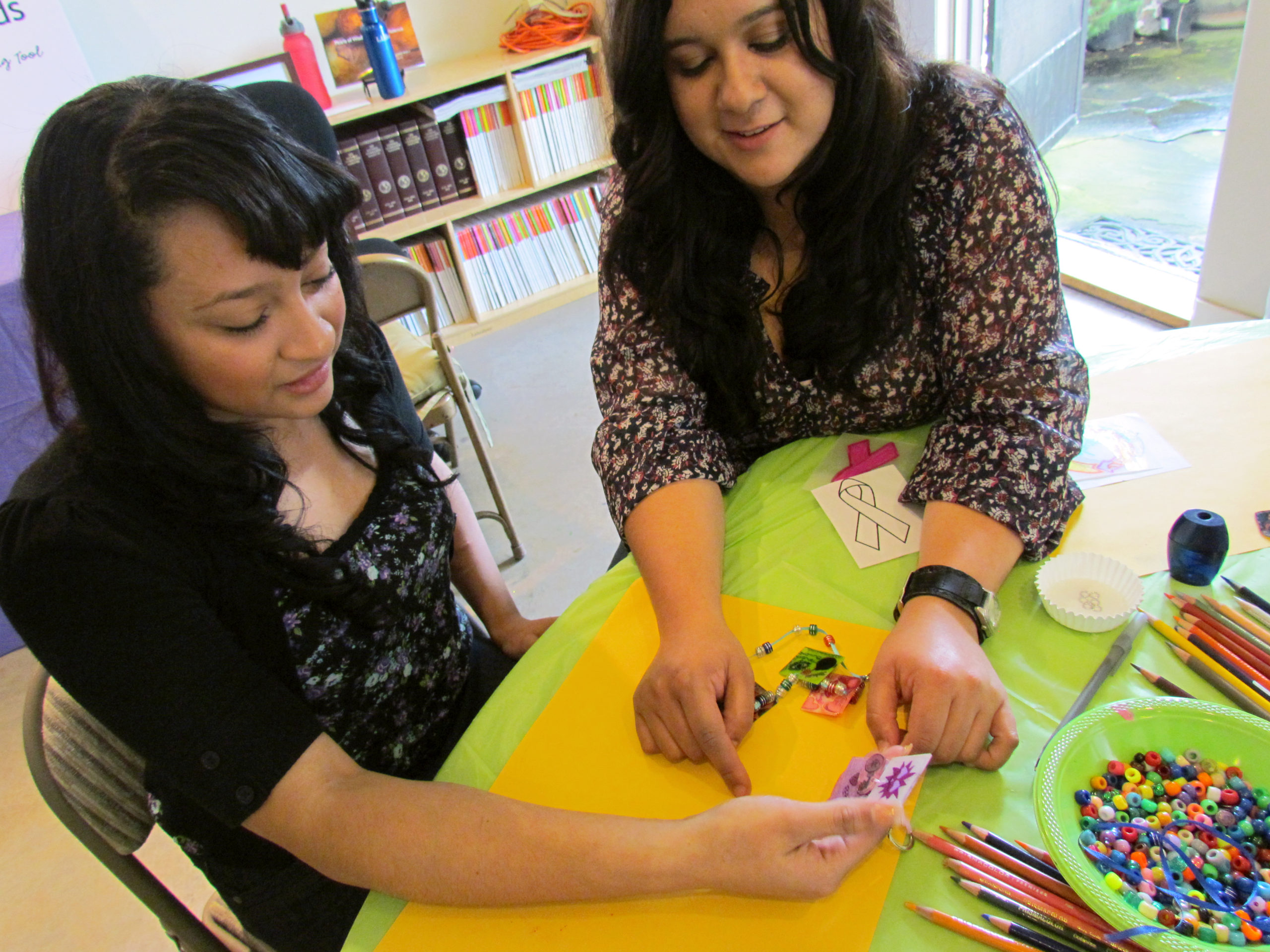During my twenty years of service in the field of domestic violence, every ounce of my work has given me cause for reflection and growth. But my most significant step toward development was when I began providing services exclusively to our LGBTQ+ community. I saw myself reflected in a culture that I call my own.
Art has been the most essential tool for healing in the work I do.
However, I quickly realized that all the tools I used to work within the mainstream domestic violence field would not translate for the LGTBTQ+ clients I was working with. A mentor of mine mentioned that many LGBTQ+ survivors do not identify as intimate partner violence (IPV) victims — because many of us see domestic violence in a very heteronormative way.
Every flyer, brochure, and PSA usually centers on a cisgender female as the victim and a cisgender male as the perpetrator.
That could not be farther from the truth in the LGBTQ+ community, partially because many of us do not subscribe to gender roles. So when we set out to create healing spaces, we do so with the intent to remove the heteronormative lens through updated screening practices, forms, and workshop materials to support our clients.
Our LGBTQ+ survivors of IPV exist in a world where their rights as people are continuously under attack. Where their existence is challenged and deemed unacceptable. When those narratives are at the forefront of all social media and news, they remind us that we don’t matter. For LGBTQ+ victims, this is compounded by what they are already told by family or friends. Things like “You shouldn’t be in relationships like this. If only you were like everyone else, this would not have happened to you. We don’t accept your relationship, so we don’t have services for you.”
That externalized bigotry and oppression is transformed into shame and fear. Two things that an abusive partner knows how to exploit and control to make it harder to seek help and leave.
This is why allowing all our survivors to show up authentically and for us to remain non-judgmental is the most important thing we can do. This enables survivors to feel safe and potentially work towards mental and psychological wellness.
An essential tool we can use is art — it has been the most essential tool for healing in my work. Art does not subscribe to one approach or perspective. Art gives a voice, and it doesn’t censor its words. Art accepts everyone willing to use it.
Art can connect because art does not judge. Art removes barriers in intervention and prevention efforts. Art can elevate survivors’ stories and create a profound impact when it is used with marginalized, underserved, and oppressed communities. Because through sharing our lived experiences, we can find ourselves. Art allows us to communicate our experiences and give voice to our traumas.
As an advocate, I have relied upon AWBW to support the work we do with survivors through their beautifully explained workshops that have helped create moments of healing. But, most importantly, it has contributed to my professional life and how I lead as an advocate. Its ability to give me permission to also heal from the compassion fatigue and vicarious trauma that this work comes with is one of the reasons for my longevity in this career. AWBW has always been there.
One particular art workshop I always gravitated towards was Inside/Outside. I love that I can adapt it to many different populations and needs. One particular time, I used it with my LGBTQ+ survivor’s empowerment group. I asked clients to share how they feel the world sees them in this relationship and how they see themselves.
The group was so powerful, and it really helped clients connect to being in an abusive relationship. Because they realized that how they felt did not match their outward presentation. One client had a lot of self-blame for the abuse from her partner and minimized the abuse in her current relationship because it wasn’t physical, and it wasn’t as bad as what she experienced with her parents. She justified the abuse because she was in a queer relationship; she thought domestic violence only happened in cisgender, straight relationships.
She had a breakthrough that night because she realized how much she was masking and how she felt about this new relationship on the inside was equivalent to how she felt before.
From that moment forward, because the art workshop allowed her to authentically show up as herself, she was able to continue to show up and safely leave an abusive relationship.
Gio Martinez
Windows Facilitator
Human Services Association
Bell Gardens, California
Utilize the Inside/Outside worksheet to explore the “you” that you know on the inside and the “you” that people see on the outside.
Download Worksheet
Want to utilize art to help LGBTQ+ folks process & heal from trauma?
Attend a Training Apply for a Social Justice Fellowship
A Window Between Worlds (AWBW) supports hundreds of direct service organizations across the country to incorporate creative expression into their work with trauma survivors. With this blog we uplift the voices of our art workshop facilitators and participants. We invite you to take in this perspective, notice what resonates and explore how it may fit into your life.





